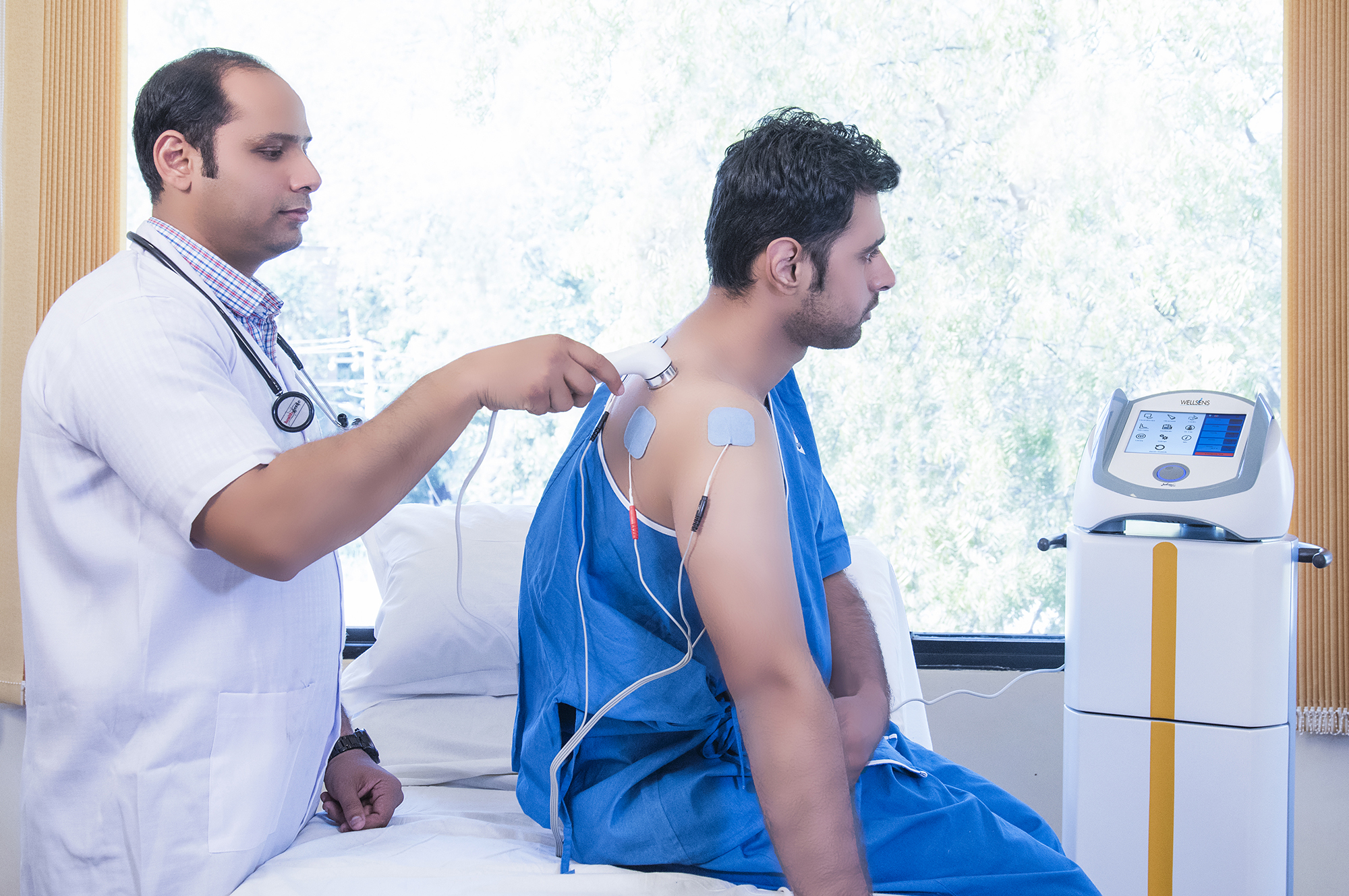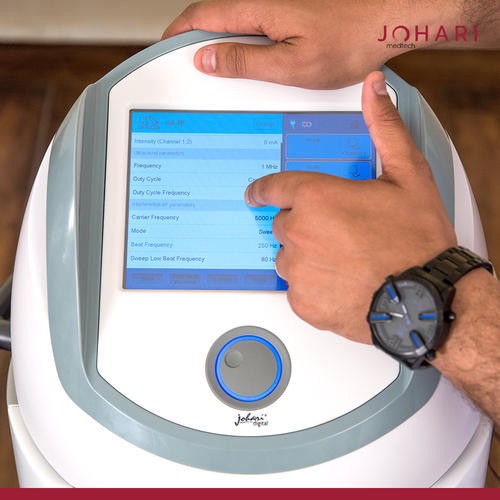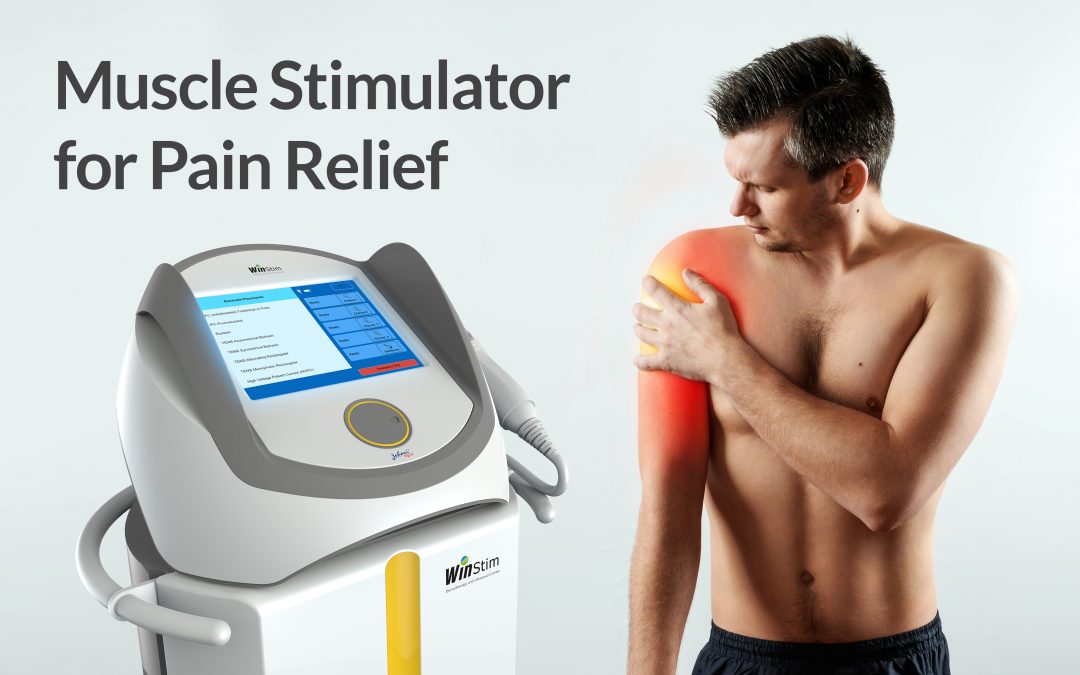Are you a fitness freak or someone too lazy to step out for a walk?
Or a workaholic who doesn’t have time for long spa sessions.
Muscle aches are an indispensable part of every age and routine. It is an unavoidable evil during long work hours. Often, youngsters ignore and overlook small pain in muscles and joints due to invasive procedures followed by medicines.

But, Hey! ever wondered about how your father has that chronic muscle pain? Was it instantaneous?
No, it takes years for a health condition to show effect. Taking things lightly at the initial stage might have serious consequences later on. Let’s see what to do to avoid pain and get long term relief without much hassle!
Any restriction in the mobility of body parts often becomes a hurdle in day to day functioning.
- Postoperative pain
- Reduced back pain
- Bursitis
- Weakened muscles or poor muscle control
- Tendonitis
Why is E-stim used?
Whether suffering from fibromyalgia or you have a condition that causes excessive pain in the muscles. Every situation shall make things more complicated if left unattended in the long run. The use of slight electrical stimulation shall normalize the stress in muscles and cause flexibility. The transcutaneous electrical nerve stimulation technique (TENS) plays a crucial role in curing muscle pain in various body parts and dimensions.

Types of Electrotherapy
All electrotherapy devices have certain similarities, such as using battery power to apply current to electrodes. The therapies vary in frequencies, waveforms, and effects. These are some of the most commonly used kinds of electrotherapy:
- Transcutaneous electrical nerve stimulation (TENS)
- Percutaneous electrical nerve stimulation (PENS)
- Electrical muscle stimulation (EMS)
- Interferential current (IFC)
- Pulsed electromagnetic field therapy (PEMF)
- Galvanic stimulation (GS)
How does the E-Stim technique apply through devices?
A physiotherapist can use electrotherapy in many ways.

#1. Managing chronic and acute pain
It’s a pain controlling procedure where the signals causing pain are interrupted by the electric stimulation. The interruption of the pain waves produced lowers the pain intensity. The transcutaneous electrical neuromuscular stimulator (TENS) is a powerful technique to control pain.
#2. Enhance muscle activity
A physiotherapist helps in improving the way muscles contract and perform functions. Muscle stimulation becomes extremely important in cases of post-surgery pain, injuries, or operations.

Several major developments in this line are Winstim (Electrotherapy+ Ultrasound combination therapy), Multi Interferential Therapy — Analgesic Pulser AP439 — US FDA Cleared Physiotherapy Device and many more. These units are highly effective in muscle dystrophy, muscle pain, and back pain. Electrical stimulation in back pain, post-surgical injury, and paralysis play a crucial role in regaining muscle function.

#3. Manage incontinence
Women often suffer from a condition of involuntary urination. Involuntary urination is occurring due to the weakening of muscles is referred to as “Incontinence”. Aging can be a major factor for incontinence a physiotherapist may help in retracting the muscles of the bladder to keep the urine flow at bay.
#4. To induce medication and control trigger points
Trigger points are the regions in the body where chances of chronic and acute pain are most probable. The electrical stimulation process relaxes the tension in muscles. Ignoring small indications might have serious consequences later on. Physiotherapeutic electric therapy plays a crucial role in reducing the effect of chronic pain. Electricity reduces the symptoms effectively and decreases the tension in the muscle effectively. The interferential current plays a very crucial role in minimizing the symptoms. Some of the inflammatory medicines injected by the skin, the technique is referred to as Iontophoresis. The electricity pushes the medicine inside the skin to decalcify the deposited impurities in the muscles. Dexamethasone remains a classic example of administration via electrical stimulation.
#5. Healing wounds via Electrical Stimulation
The electrical stimulation improves the blood supply around the wound for stimulating the healing process. The physiotherapists utilize the electrical stimulation technique to facilitate faster healing.
Conclusion
Electrical stimulation is a highly crucial technique when it comes to physiotherapy. The sensory effect has a wide range of applications. It has a wide range of applications, miraculous achievements like recovery from stroke by electrical stimulation.

